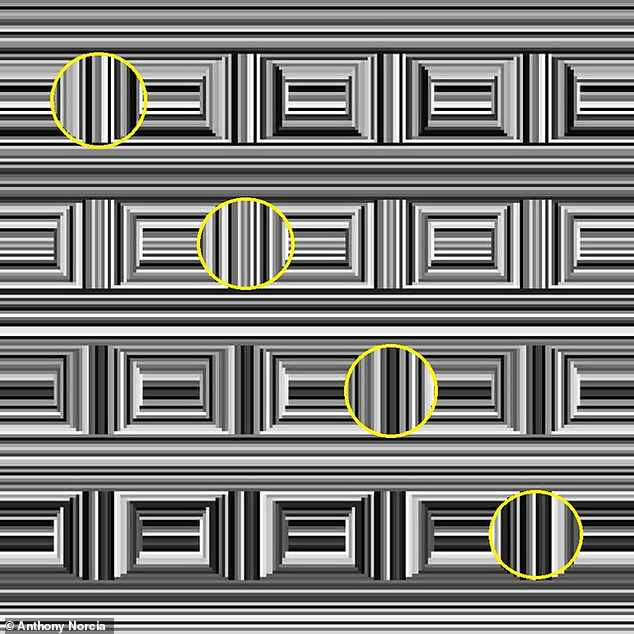An impressive optical illusion containing “hidden circles” is baffling people on the Internet.
The “Box Illusion” seems at first glance to depict the recessed panels that often adorn ceilings. However, upon closer inspection, it appears that there are circles hidden inside the image. Unfortunately, you may find it difficult to see them.

After seeing the circles, the fascinating image that seems to go back and forth between two shapes turns the perceptions upside down.

The Box Illusion was created in 2006 by Anthony Norcia, a professor of psychology and visual development at Stanford University in California. “Those who see this screen for the first time do not always see the 16 circles segmented from the background,” Professor Norcia said. Instead, they see a series of rectangles that they often describe as “door panels”: “The illusion pits segmentation cues against what appears to be a very strong preliminary [information] to interpret the image as a series of 3D building cases with closed borders.”
Average vision time: 45 seconds
Professor Norcia showed the image to nearly 100 people in his research, which took an average of 45 seconds to see the apartments. He said some observers take much longer to see the circles, but most only notice it after a very short time, like 10-15 seconds.
The box illusion quickly spread on Twitter after it was posted by Italy-based engineer Massimo Orgiazzi. Judging by the comments on the social media platform, it may take some time to notice these flats. For the illusion plays with the fact that the visual brain is geared towards identifying objects in what we see—in this case, carved wood panels. Rectangles are generally more common in our everyday environment than circles, and therefore the brain gives higher priority to perceiving rectangular shapes.